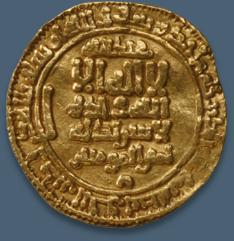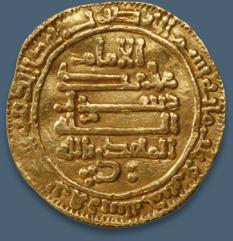ISLAMIC ART COLLECTION IN COPENHAGEN AMONG THE TEN MOST IMPORTANT IN THE WESTERN WORLD
PART I – INTRODUCTION TO THE DAVID COLLECTION AND COIN MINTED DURING THE REIGN OF IMAM AL-MAHDI
Introduction
The David Collection was founded by C. L. David, a prominent lawyer who left his art collections to posterity in the building that had been his own home in Copenhagen, Denmark. The museum is owned and administered by the C. L. David Foundation and Collection.
Since David’s death in 1960, the area covered by the museum has increased significantly in keeping with the acquisition of numerous new works of art. The Collection of European 18th-Century Art is now complete. First and foremost, however, the Collection of Islamic Art has been consolidated and expanded, making it the museum’s most important.
Today, the Collection of Islamic Art is the museum’s largest and covers virtually the entire classical Islamic world, from Spain in the West to India in the East, and spans the period from the 8th to the 19th century, with all artistic media represented. It is also by far the largest of its kind in Scandinavia and is among the ten most important in the Western world.
 The works of Islamic Art at the museum’s website are divided into 20 sections according to specific epochs and dynasties and according to different geographic regions. The visitor is able to see and compare a wide range of objects and monuments from the same period. Along with an introduction to the period, the visitor is given a survey of the geographic area where the works of art were made.
The works of Islamic Art at the museum’s website are divided into 20 sections according to specific epochs and dynasties and according to different geographic regions. The visitor is able to see and compare a wide range of objects and monuments from the same period. Along with an introduction to the period, the visitor is given a survey of the geographic area where the works of art were made.
Each of the 20 sections provides a historical introduction, a map, a selection of works of art, coins, and architecture.
With the museum’s permission, we are pleased to feature some of the Fatimid coins in the museum’s holdings. The seven Fatimid coins shown in this short series were minted during the reigns of the Fatimid Imams-Caliphs al-Mahdi to al-Mustansir. For each coin the obverse and reverse faces of the coins will be displayed along with a description of the legends that appear on both the sides.
__________
Imam al-Mahdi
Ruler: Abu Muhammad ‘Abd Allah
(297-322 H/909-934 CE)
Mint name: al-Qayrawan – Kairouan, the Abbasid, Aghlabid and first Fatimid capital in Ifriqiya
Date: 305 H (917-918 CE)
Metal and denomination: Gold dinar
Weight and measurement: 4.15 g / 19.0 mm
‘abd allah / la ilah illa / allah wahdahu / la sharik lahu / amir al-mu’minin
“’Abd Allah, no god but God, Unique, He has no associate, Commander of the Faithful”
Margin
muhammad rasul allah arsalahu bi’l-huda wa din al-haqq li-yuzhirahu ‘ala al-din kullihi wa law kariha al-mushrikun
“Muhammad is the messenger of God who sent him with guidance and the religion of truth that he might make it supreme over all other religions, even though the polytheists may detest it.” The Holy Qur’an, Sura 9 (Tawba), verse 33
__________
Field
al-imam / muhammad / rasul / allah / al-mahdi billah
“the Imam, Muhammad is the messenger of God, al-Mahdi billah”
Margin
bism allah duriba hadha’l-dinar bi’l-qayrawan sana khams wa thalathmi’a
“in the name of God, this dinar was struck in al-Qayrawan the year five and three hundred”
__________________________
Please read other articles in this series at:
Literary Reading: Part II – Fatimid Coins of Imams al-Mansur, al-Muizz and al-Aziz
Literary Reading: Part III – Fatimid Coins of Imams al-Hakim, al-Zahir and al-Mustansir
For an excellent overwiew of Fatimid Coinage, please read Documents of History, Symbols of Authority: The Coinage of the Fatimids, by Alnoor Merchant at http://www.iis.ac.uk/view_article.asp?ContentID=105703
We invite readers to visit the David Collection website at http://www.davidmus.dk/en to learn more about the museum and its founder, and to view the Islamic Art Collection.




Thank you very much for sharing this information, I had never heard of the David Museum, Jazakallah.
However, as a student of History, I was amazed to see in the explanation of the coin the following:
“Ruler: Abu Muhammad ‘Abd Allah or ‘Ubaydallah al-Mahdi”
There is no need to refer to the Imam as ‘Ubaydallah al-Mahdi” (meaning uncertain paternity) here. Please forgive me, but this is not acceptable, and completely incorrect.
The true name as mentioned on the coin is “`Abd Allah”. The History of the Fatimid Imamet has been clouded with misinterpretation for many years.
But, now since Primary sources such as these coins are now proof of this fact, I find it amazing that History still doesn’t accept this!
If you wish to use “‘Ubaydallah al-Mahdi” then perhaps it could be done in the following manner:
Abu Muhammad ‘Abd Allah (misunderstood, or misinterpreted as ‘Ubaydallah al-Mahdi)
I hope you understand the depth of the current topic, since Imam Mahdi is the Founder of the Fatimid State.
This is just one of many mistakes that have repeated too many times.
Thank you
Thank you, Mufaddal, for your frank feedback on this important matter. A change has been applied in the article reprinted here; however the museum website is something we don’t have control over.